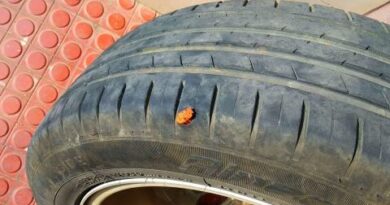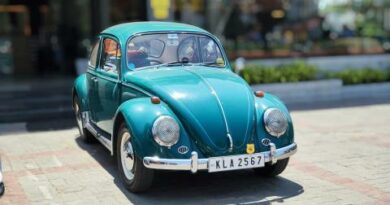Rover Streetwise | Shed of the Week
Ahead of its time. Like the steam-powered pigeon
By Tony Middlehurst / Friday, 1 September 2023 / Loading comments
Another SOTW debutant this week, hooray! First though, who remembers the magnificent 1992 Metro Chairman from back in 2016? Sadly, the Chairman’s MOT expired in 2018, but fear not, Shed is today bringing you another Rover oddball that looks like it’s got plenty more years left in it.
Rover launched the Streetwise in 2003. Basically it was a Rover 25/MG ZR perched up high (for the time) on 10mm higher suspension and 16-inch wheels. Designer Peter Stevens was happy to acknowledge the mould-breaking influence of the 1977 Matra-Simca Rancho in its cheeky-chappie shape, but punters didn’t get it. The Streetwise looked like an AWD car but it was strictly two-wheel drive.
Rover’s PR machine tried to beat off criticism about it not being a genuine off-roader by banging on about its ‘Urban On-Roader’ status. Not a great defence really because if you think about it you could give that handle to any car. Taken on its own merits, the Streetwise was a very decent little car that in hindsight nicely suits the times we’re now in. It was no roadburner, and it would certainly have profited from an extra gear, but in SE spec as here you got a well-equipped half-leather cabin with air con, leather steering wheel and gear knob and individual rear seats separated by commodious tat buckets (five seats were standard in lesser models).
It was practical too with its built-in roof rack and traffic-deflecting plastic bodywork protection. This last feature was tres chic at the time, especially in France, and Paris in particular, where motoring has always been a contact sport. Obviously Citroen got in on that act many years later with the C4 Cactus of 2014, but Rover (or Matra-Simca) was there first.
Rover stopped making the Streetwise in April 2005, not because it was pants but because Rover stopped making everything in April 2005 when they suddenly and rather inconveniently went bust. That was annoying because the Streetwise’s demise coincided with the start of a massive growth spurt in the B-segment crossover market. Rover had plans in place to meet that demand with Streetwised-up 45s and 75s. Nanjing Auto Corp actually revived the Streetwise 25, albeit briefly, in 2008 under the MG 3 SW badge. Quite a few Streetwises ended up in Russia where their ability to survive bad roads while being driven under the influence of eight bottles of vodka was greatly admired.
Like many Rovers, the specific Streetwise that you’re currently either admiring or hating has a low mileage of just 53,000. The last MOT in February had advisories for a rear wiper blade, a non-excessive engine oil leak, a slight power steering fluid seepage and corroded front springs. Nothing too wallet-threatening there. It looks fresh and bright and even the badges look okay. The ones on the Streetwise were famous for going milky, allegedly as a result of ‘Phoenix Four’ Rover CEO Kevin Howe’s decision to save money by having them made outside the UK when much better quality British-made ones were available for just 20p extra. To this day Peter Stevens still regrets not banging the table more on that one.
Shed reckons that dealers selling these cars will often take an offer on them because everyone and their dog knows about K Series head gaskets and they’re expecting you to lowball them using that info-nugget so they price them high to start with, £1,789 in this case. Gasketry is unlikely to be an issue going forward because any Streetwise that’s survived this long will almost certainly have had its Ryvita items replaced by steel ones that don’t dissolve when caught in the same postcode as a liquid. That leaves you with a sweet and tough little 1.4 that was smooth, light and spritely enough to make it a very popular buy-in choice for other car builders, and not just kit car builders either.
To conclude what has turned into something of a history lesson (sorry), let’s go back to 1991 when the Metro Scout concept was built by Rover consultancy firm ADC. It looked like a vertically stunted version of the Metro Chairman, although in fairness anything short of a giraffe looked stunted next to the teetering Chairman, a vehicle you would never want to take across the Forth bridge on a breezy day.
Rover never pursued the Metro Scout project beyond providing donor cars for it, but it was interesting on account of the six variations that were built to cater for different customers. You had Sunrider (racks for windsurfers), Country (big mudflaps, boot storage area), Metropolis (car phone, anti-scuff wheel trims), Specialist (aimed at photographers with an increased ride height and secure storage area), and La Petite Famille (bike rack, removable seats). The best/worst one however was surely the La Femme which had power steering, a breakdown phone, big mirrors on the sun visors, a hair dryer, and a parking ticket holder. Eeeh, how times change. Don’t blame Shed, for once he’s not making it up.
Source: Read Full Article


